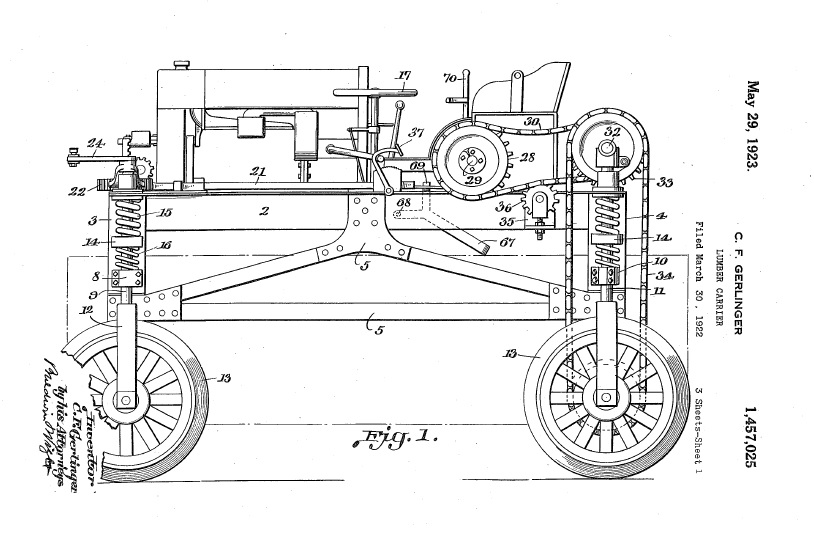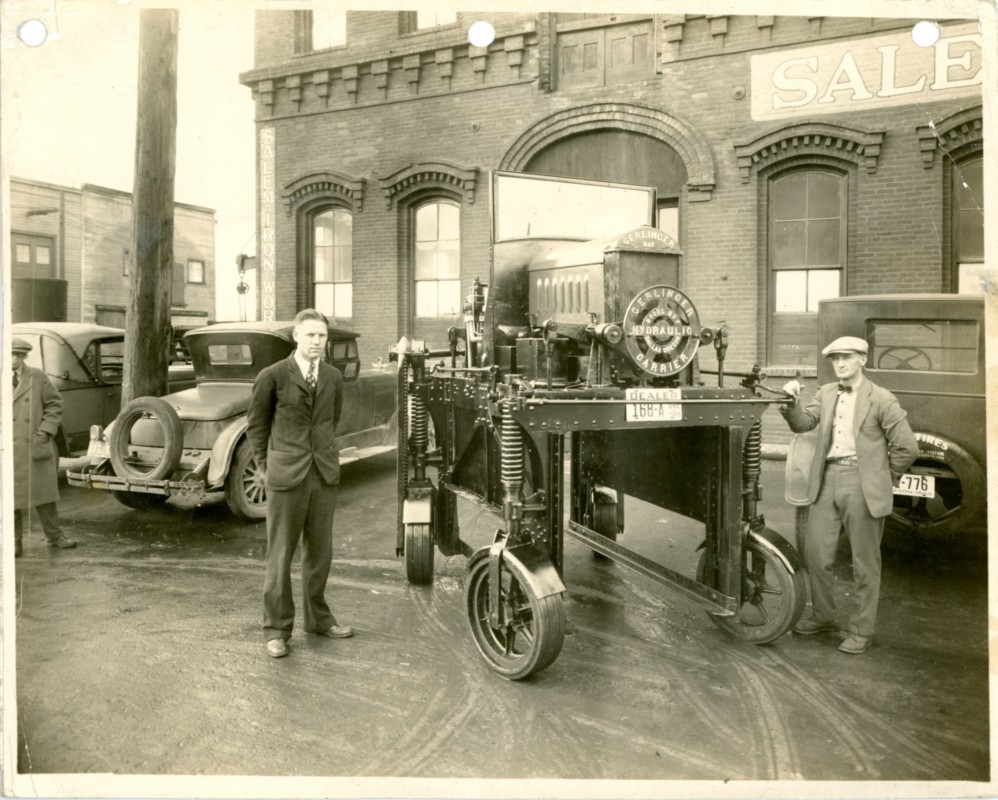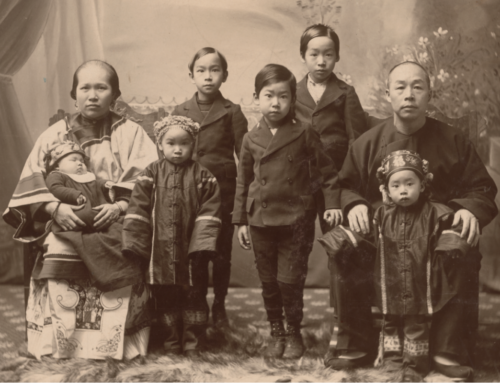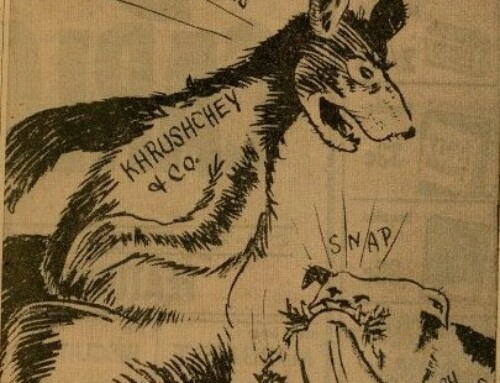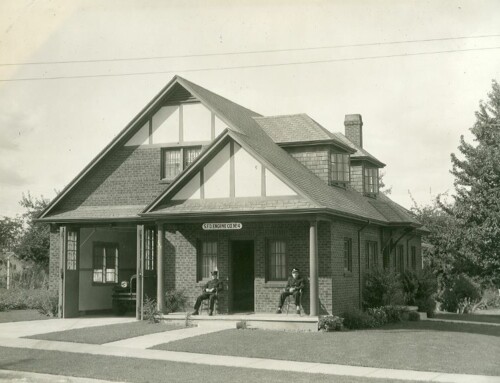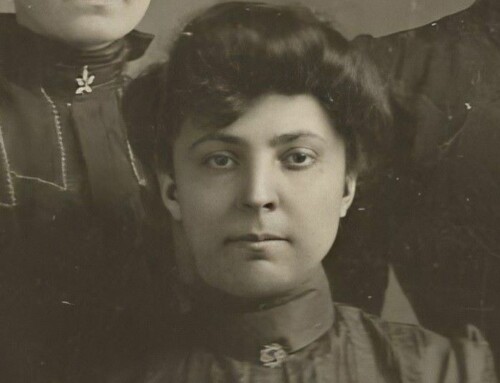A devastating explosion. The fate of three men hanging in the balance. A catalyst in the life of one.
It was a late afternoon in April 1908, a regular workday in the machine shop for the Salem, Falls City & Western Railway in Dallas, Oregon. Engineer August Gerlinger had just stepped into the shop to give his daily report to the master mechanic, his brother Carl. Apprentice John Cerny was assisting with repairs to a piston brought over from the sawmill. To make the repair and sink a rod firmly into its shaft the cylinder head needed to be heated. The process took both John and Carl Gerlinger’s efforts.
“Suddenly the head burst with a terrific explosion, one fragment tearing a hole in the north wall of the building and falling in a field at a distance of 200 feet, and the other crashing through the south wall and falling near the south east corner of the shop,” reported the Polk County Observer.
Cerny, the young apprentice, staggered out of the building, clothing torn with a blackened face. August Gerlinger was found near the hole in the north wall missing the upper portion of his face. Struck by the flying piece of iron, death had been instantaneous. Master mechanic Carl Gerlinger was found lying near the blast sight, blinded and severely wounded.
Carl Frederich Gerlinger was born 28 March 1878 in the Alsace-Lorraine region along the border of France and Germany. He was the son of George and Matline (Haller) Gerlinger, one in a family of 8 children. Orphaned at a young age, he was reared and educated in his native land.
While yet in his teens he was apprenticed to a master in the machinist trade in Strassbourg, Germany. Four years was the term and the price $300 for the apprenticeship. He received no pay, was often underfed and worked hard to complete his work in three years before seeking employment elsewhere.
During the bitter German winter, and with very meager means, he walked from Strassbourg to Hamburg in 31 days. He signed on as a machine engineer with the Hamburg-American Line and sailed to various parts of the world. His ship was the first to deliver rails at Port Arthur in 1898 for the Trans-Siberian railway.
In 1901, Carl contracted malaria and when his ship docked in Tacoma, Washington he was taken to the hospital. His uncle, capitalist Louis Gerlinger Sr. traveled from Portland to persuade him to make his home with family in Oregon. Following his recovery Carl went to work in the Albina railway shops gaining experience that would lead to a job working for his uncle and cousins as the master mechanic in the shop of the Salem, Falls City & Western Railway at Dallas, Oregon a few years later.
In June 1904, he married Miss Marguerite Bankhauser. They would have four children: Matline, Alfred C., Augusta L. and Carl. Then came that fateful day in 1908. The catalyst.
As a result of the accident, Carl lost his left arm at the elbow joint and two fingers on his right hand. His sight was in jeopardy, though the Portland doctors that his uncle rushed to his bedside to oversee his care were optimistic that with time and care he would recover his sight.
His recovery took over a year and by the end of it Carl’s focus had shifted. From the everyday work of a machinist or master mechanic, he was determined to focus his time and energy on inventing. By the end of his life, he would be recognized for inventing the oil distributor, oil retort and spark arrestors for locomotives, log bunks for loading and unloading logs from railcars, and the Gerlinger Lumber Carrier, just to name a few.
First built in 1918 and patented in 1922, the lumber carrier was inarguably the most successful of Carl’s inventions. Its purpose was to replace the wagon, team of horses and driver typically used to move loads of lumber from one point to another in the sawmill and lumberyard, both in efficiency and cost.
Carl painstakingly worked out every step in the machine’s evolution through foundry, forge, and machine shop finally building a prototype that was able to withstand the most rigorous of yard tests in the biggest plant of the Willamette Valley Lumber Company owned by his cousin George. The most attractive feature of the machine to sawmill operators was the low cost and easy operation. It could be operated by any man that could drive a truck.
Its Fordson, four-cylinder engine could operate off gasoline, kerosene or distillate at the small consumption rate of only a gallon an hour. The load lifting device operated by means of a reversible clutch and worm gearings from the pulley shaft on the engine. The artillery type wheels were 26 inches in diameter with 5-inch solid rubber tires. It had a wheel base of eight feet, six inches and a load clearance of 4 feet wide by 4 feet nine inches high.
In an interview given to the local Salem paper, Mr. Gerlinger stated that by “giving the engine gas and oil the machine will work for you with an unfailing loyalty and efficiency that will surprise you, and put more smile-making figures on the right side of the ledger than four times the investment in horse-drawn equipment could do.”
The lumber carrier is just one of Carl Gerlinger’s inventions that resulted from the catalytic event on that fateful day in April 1908. The accident and the great personal sacrifice it took honed his focus and channeled his brilliant mind, creating a legacy that is the Gerlinger Carrier Company still in operation today.
This article was written by Kaylyn Mabey for the Statesman Journal where it was printed 16 June 2019. It is reproduced here with sources for reference purposes.
Sources:
- “Awful Explosion at Car Shops”, Polk County Observer, 3 April 1908, p. 1
- History of Oregon, Carey, Charles Henry. Chicago, The Pioneer Historical Publishing Co., 1922. Vol. 2, p. 447-8.
- Lumber Carrier, C.F. Gerlinger, USPO, patent no. 1457025.
- “Iron Plant Purchased By Dallas Firm”, Capital Journal, 28 Aug 1925, p. 1
- “Salem Iron Works To Be Tripled In Size”, Capital Journal, 28 Aug 1925, p. 1
- “Gerlinger Bunk Praised: Dallas Man Has Patent on Unique Apparatus”, Polk County Observer, 12 Nov 1915, p. 1
- “New Carrier Is Used at Dallas”, Oregon Statesman, 4 Feb 1922, p. 2
- “Carl Gerlinger, Prominent Oregon Industrialist, Dies”, Capitol Journal, 14 Nov 1951, p. 5



